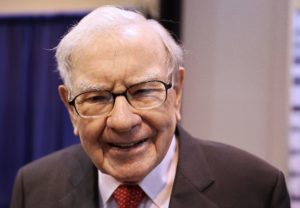Peter Lynch is one of the greatest investors of all time. While running the Fidelity Magellan fund from 1977 to his retirement in 1990, he generated almost hard-to-believe annualized returns of 29.2% per year. And before you discount it as being at the right place at the right time, this was before the massive bull market of the 1990s.
If there were a Mount Rushmore of investors, Peter Lynch’s face should be carved on it.
But Lynch was also responsible for some of the most misunderstood and poorly used words of investment advice in history when he recommended that you “invest in what you know.”
The most frustrating aspect is that Lynch’s advice here is actually really solid… if you use it right. Wall Street analysts and fund managers often never leave their elegant New York offices. Regular, everyday investors can often see a budding trend years before Wall Street simply by having boots on the ground.
And new trends in consumer goods are often visible on the street months or years before they show up in the financial statements. Lynch routinely wrote over the years that he found some of his best investment ideas from trips to the mall.
The Peter Lynch Bias
But this is where good advice can go very wrong. “Buying what you know” can quickly degenerate into buying a stock because you like its product — what I call the “Peter Lynch Bias.”
Liking the taste of their burritos is not a sufficient reason for buying shares of Chipotle Mexican Grill (NYSE: CMG) any more than liking their lattes is reason to buy shares of Starbucks Corporation (Nasdaq: SBUX).
Peter Lynch was never quite that simplistic, and we shouldn’t be either.
 While we’re at it, we need to look past the hokiness of another legendary investor, Warren Buffett. Buffett likes to play the part of a simple Midwesterner — the kind of guy that really would buy Coca-Cola Co. (NYSE: KO) stock because he likes the taste of Cherry Coke.
While we’re at it, we need to look past the hokiness of another legendary investor, Warren Buffett. Buffett likes to play the part of a simple Midwesterner — the kind of guy that really would buy Coca-Cola Co. (NYSE: KO) stock because he likes the taste of Cherry Coke.
Don’t believe it for a second.
It’s an act. Buffett is one of the sharpest financial minds in history, and he didn’t build Berkshire Hathaway Inc. (NYSE: BRK.B) into a financial empire with such sentimental nonsense. He did it by having discipline and buying shares of great businesses when they were reasonably priced.
I bring this up because I see signs that first-time investors are a major driver of this following the coronavirus crash of February into March. Robinhood has been reporting record numbers of account openings, and other online brokers aren’t far behind.
Robinhood investors tend to be younger and tend to have relatively little to no experience in the stock market. The mobile-app-based broker routinely posts the most popular stocks on its platform, and the list includes struggling airlines and cruise operators, pot companies and wearable tech companies like Fitbit.
Is it possible that Robinhood investors are doing detailed research on these companies? I suppose so. But I think it’s far more likely that these newbies are simply buying companies whose products they like, irrespective of price or any deep understanding of the companies’ financial statements.
So, how can we avoid the Peter Lynch Bias?
By staying emotionally detached, having a process in place and sticking to it.
By all means, follow Lynch’s advice by looking for emerging trends on your next trip to the mall (or next browse on Amazon). But before you pull the trigger to buy or sell something, make sure you’re following your process.
Here are a few practical suggestions on avoiding the Peter Lynch Bias:
If you’re looking to “invest in what you know” with respect to a product you like, try using one of their competitors before seriously considering purchasing the stock. A decade ago, if I had really taken the time to learn how to use an Apple Inc. (Nasdaq: AAPL) iPhone, I probably wouldn’t have gotten sucked into the BlackBerry Ltd. (NYSE: BBRY) value trap. I cannot deny that my decision to buy it was biased by my ownership of a BlackBerry phone at the time, and I paid dearly for that mistake.
To the best extent you can, try to follow trading rules and use stop losses. What works for one investor will be very different than what works for another. Perhaps you use a hard stop loss of, say, 10% below your purchase price. Or perhaps you use a trailing stop or 20-25%. If you are a value investor, perhaps you base your sell decision on valuation or fundamentals rather than market price. But in any event, my point stands. Lay out the conditions under which you intend to sell and stick to them. Stock ownership is a marriage of convenience with quick, no-fault divorce if your situation changes.
Don’t make the mistake of falling in love, and don’t partake in the Peter Lynch bias.
One size does not fit all here. But whatever investment discipline you follow, don’t allow your enthusiasm for a product to cloud your judgment.
• Money & Markets contributor Charles Sizemore specializes in income and retirement topics, and is a frequent guest on CNBC, Bloomberg and Fox Business.
Follow Charles on Twitter @CharlesSizemore.





